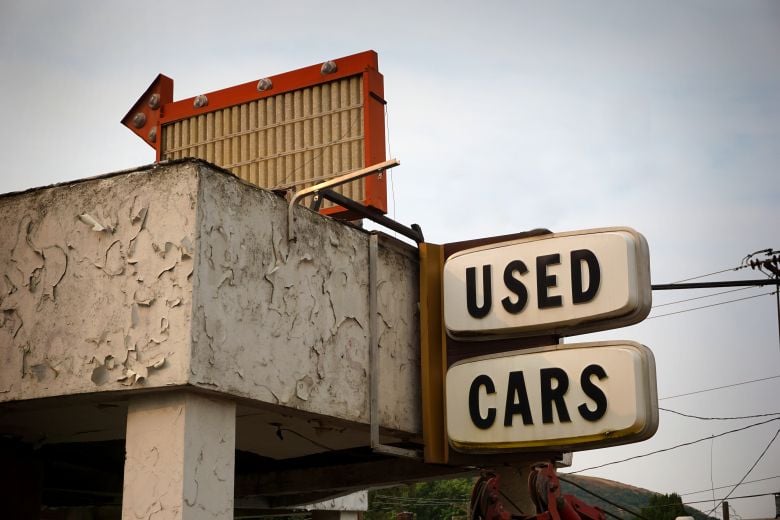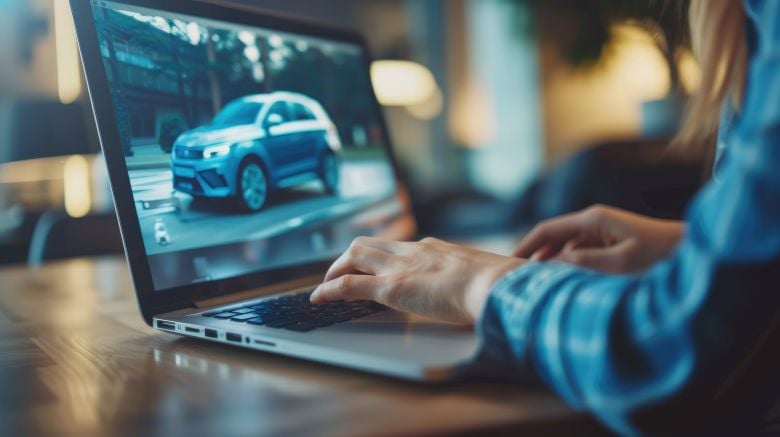
Buying a Used Car? What to Check Before You Drive Away
- PEAK Squad
- PEAK
- May 14, 2025
Learn what to check for when buying a used car.
Pre-owned vehicles offer a lot of financial advantages. Relative to buying new, the same budget can get you into a higher-end make or model. Used cars also depreciate slower, and they're often less expensive to insure.
However, used cars pose some unique risks. Some sellers can be taken at their word, but others can't. As a buyer, you may not know the difference until it's too late. You can avoid these risks with some due diligence.
That diligence begins with these seven essential tips for buyers, but it doesn't end there. Once you've found a car you like, it’s important to do a deep dive into the vehicle's condition and history by following this process:


Research the vehicle's history
When a used car makes your shortlist, one of the first things you should do is a thorough check of the vehicle's history. This will help you uncover any disqualifying problems before you invest any more time or effort.
Your research should include two main elements:
Get a vehicle history report
Obtain the vehicle identification number (VIN) from the seller. Then, engage a trustworthy car research service to run a VIN report.
The report will provide details about:
- Previous ownership
- Accident history
- Whether the car has a clean title or a salvage title
If your research reveals details that conflict with the seller's version of events, or if it shows that the car has a salvage title, proceed with extreme caution or eliminate the vehicle from your shortlist. These are serious red flags.
If you choose to proceed anyway, leverage your findings to negotiate a lower sale price.
Do a title search
You can also use the VIN to perform a title search with the National Motor Vehicle Title Information System (NMVTIS) or your state's Department of Motor Vehicles (DMV). Private-sector providers also offer this service.
Here, your main objective is to ensure the vehicle doesn't have any title-related question marks, like liens, salvage events, or manufacturer recalls. It can also tell you if the vehicle's odometer is known to have been altered.
As with your VIN report, look for a clean title with no worrisome issues.


Assess the mechanical condition
The next things to look for when buying a used car relate to the vehicle's general mechanical condition. Check for telltale signs of potential problems. Here's how:
Look under the hood
Pop the hood and visually inspect the vehicle's engine. Check for:
- Visible engine defects: Clear signs of neglect, like rust and loose belts or hoses, indicate the vehicle's owner hasn't taken the best care of their car.
- Fluids: Make sure the oil, antifreeze coolant, brake fluid, and other essential fluids are at their proper levels. Our DIY spring maintenance checklist and fall car care guide both cover details about proper fluid levels and how to check them.
- Leaks: If you're buying from a private seller and you're visiting the seller's home, check their driveway or parking spot for stains that indicate possible leaks. You can also bring an old blanket, spread it under the vehicle, then check it a few minutes later for fluid drips.
Start the vehicle, listen, and smell
Other important things to look for when buying a used vehicle involve not only your eyes, but also your ears and nose.
First, start the car. Listen for unusual noises, like knocking, rattling, or banging — basically, anything that deviates from the steady, quiet, healthy hum that a mechanically sound engine produces.
Then, make sure the vehicle passes the "smell test" from both inside and outside the cabin. You shouldn't detect any unusual, unpleasant, or noxious odors.
If the car has a traditional gasoline-powered engine, watch the tailpipe to make sure it isn't producing excessive exhaust.
Take it for a test drive
The test drive is one of the most important aspects of your used car due diligence. Before you hit the road, be sure to check these interior elements for proper operation:
- All seat belts
- Adjustable steering wheels and seats
- Window, mirror, and lock controls
- Heating and air conditioning
- Stereo and navigation equipment
- Interior lights
- Horn
Also, look closely at the dashboard. Make sure no warning lights activate when the vehicle is turned on, then keep an eye on the speedometer and tachometer for accuracy once you start driving.
During your test drive, see how the car responds and handles at both city and highway speeds, if possible. Run the car through all of its gears, look for smooth and predictable steering, and make sure the brakes are responsive — and that they don't squeak.
As you drive, keep your ears and nose open for unusual sounds or odors. Also, monitor your own comfort after adjusting your seat. If you don't like the way you feel behind the wheel, you might want to consider another vehicle even if the car seems to run perfectly well.


Perform exterior and interior inspections
By this point, you should have a pretty clear idea of whether the car merits an offer or whether you'd prefer to move on. If you're still interested in the vehicle, close out your inspection with careful assessments of the exterior and interior.
Exterior inspection points
Your final exterior inspection should cover:
- Careful checks for dents, scratches, and rust
- Alignment of body panels: inconsistencies and gaps can indicate off-the-record body repairs
- Paint consistency and condition: overspray and mismatched paint may suggest a hidden accident history
- Headlights, brake lights, and turn signals: make sure they all work
Finally, check the tires. If you don't know how to measure tire treads, our spring vehicle maintenance guide explains. In addition to tread depth, examine the tread pattern. Uneven wear can indicate alignment issues or improper maintenance.
Interior inspection points
At this stage, you'll mainly be considering the condition of the upholstery. Check for stains and evidence of wear on both the seats and the floor carpeting. Ensure all floor mats are present and in good condition. It's also wise to do a final check of the instrument panel and controls to ensure everything works.
Verify vehicle documents and service records
Diligent owners keep their car service records. If they're unavailable, find out why and make sure the explanation is consistent with the VIN and title reports you ran at the outset of your buying journey.
If service records are available, review them to make sure the car has had all its scheduled maintenance. Our guide on how to maintain your first car explains what kind of scheduled maintenance a vehicle needs, and when.
Finally, perform a mileage verification. Ensure the odometer's reading is consistent with what you found in the vehicle records. If you suspect tampering has occurred, do not buy the car.
Consider a third-party professional inspection
You now know what to check when buying a used car. Even so, you might feel better if you get a professional's opinion. Any seller with nothing to hide will be perfectly willing to let you take the vehicle in for a third-party inspection.
You might have to pay for this service out of pocket, but it'll be well worth the money if it helps you avoid a car with hidden issues that only a pro could detect.
Keep your new (used) vehicle in PEAK form
After you've secured a good deal on a quality pre-owned vehicle, it's time to invest in some TLC that will keep it running smooth, strong, and safely. Caring for your car is also a great way to protect its resale value and help you get top dollar when the time comes to move on to your next ride.
PEAK Auto offers a long lineup of products that will help. Consider proprietary and high-performance options, including:
- Mach1 hybrid wiper blades: These unique blades combine the stability of a conventional blade design with a sleek, lightweight frame and easy installation.
- All Vehicles antifreeze coolant: No matter what kind of used car you bought, this top-quality antifreeze coolant will protect your engine and ward off rust and corrosion.
- Power Vision Gold headlights: Upgrade your view and light coverage while giving your new ride a slick premium look.
Finally, be sure to keep an eye on our PEAK News feature. We're always adding more helpful car care and maintenance articles.

